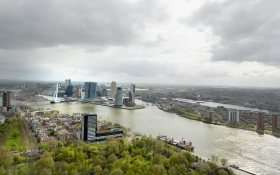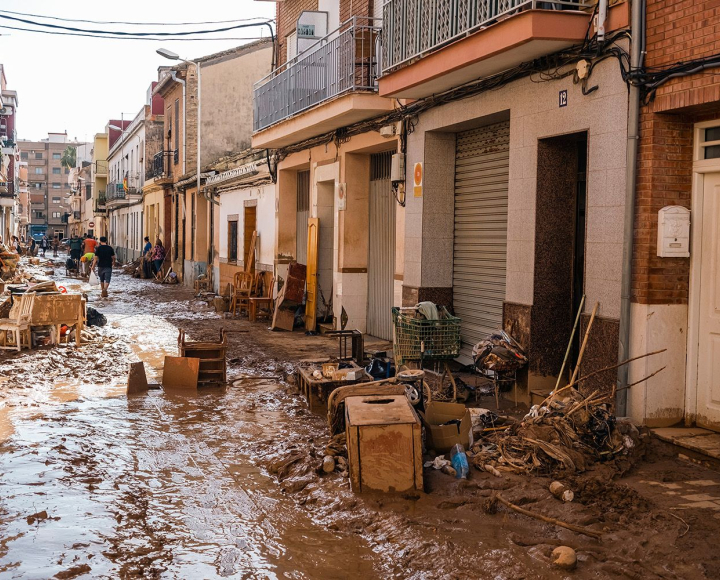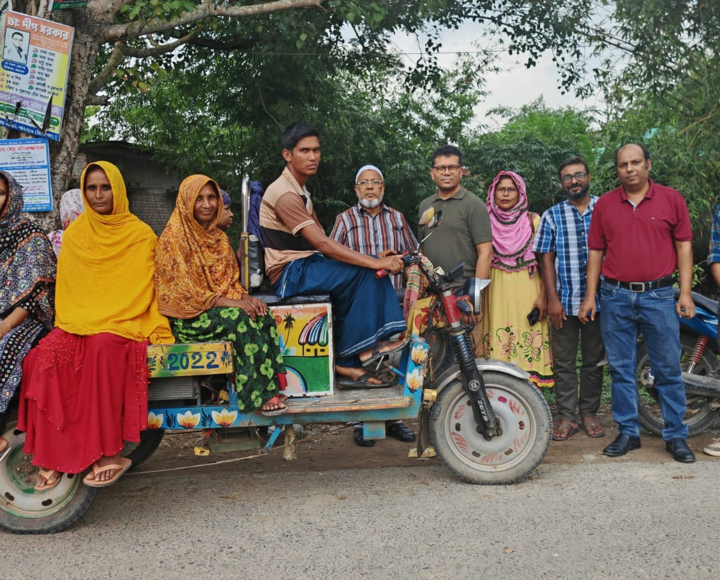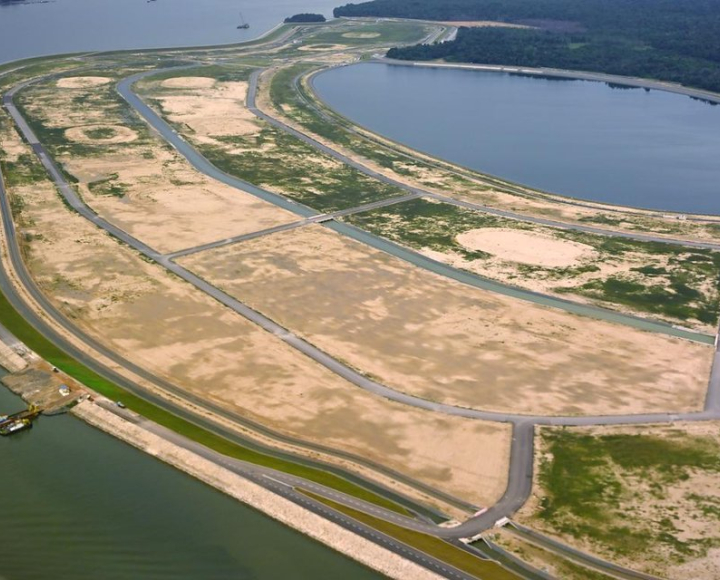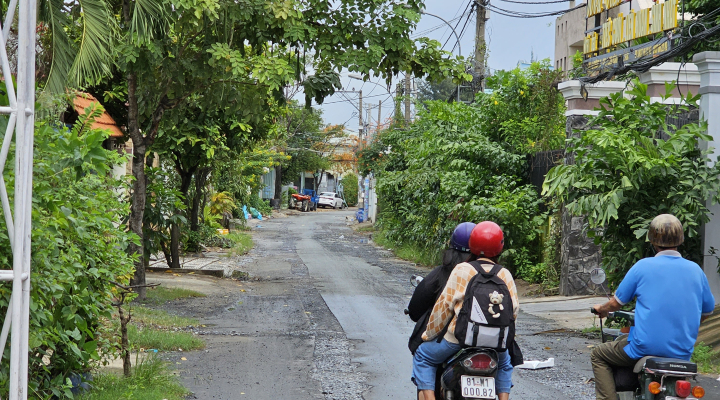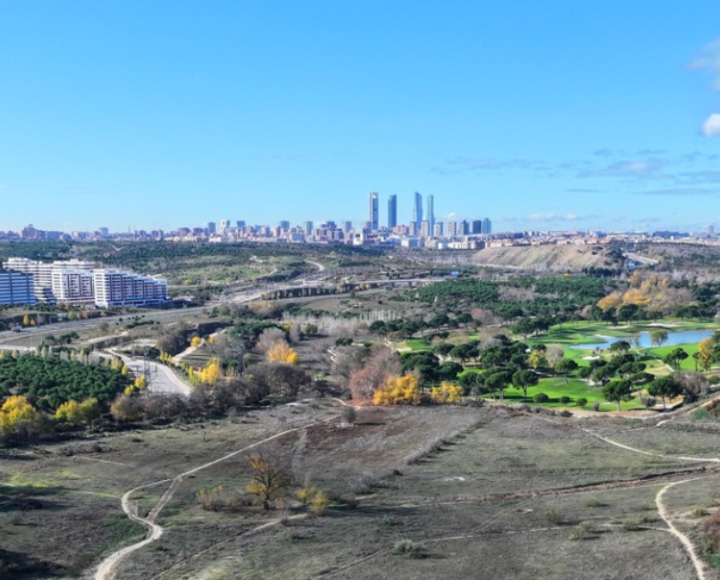Preparing for the unknown
Urban resilience means preparing for future challenges in urban areas, including for future climate changes. And that means needing to prepare for the unknown. This must be done and can be done, believes Piet Dircke of the consultant and engineering company Arcadis. The way to do it is by carefully combining robustness and adaptivity. Inevitably, the parallel with the corona crisis arises.
“Many politicians and scientists say that we have never gone through something like this before, and that we could therefore not have prepared for it. I do not agree with that.”


Surely we cannot know what the future will bring?
“That is exactly why it is crucial to choose an adaptive approach in urban resilience. You watch the climate change trends, see what does and does not work and adapt step by step. Over time, you can upscale or downscale. This closely resembles how a country such as the Netherlands is responding to the corona crisis – the precautions ease up if the situation allows, and tightens if a second wave threatens. And it matches the Dutch way of thinking. We have centuries of experience of this approach in our polder and water management. It’s like on-the-job learning, you only know if you try.”
But an adaptive approach like this has a starting point, doesn’t it?
“Yes, the starting point is a robust foundation. This means not only the hard infrastructure, but the vital infrastructure too. By that I mean things like the healthcare system, public utilities, the availability of clean water and energy, the administrative ability of governments. I therefore plead for overhauling the idea of what should be in the public domain – you need to be careful of privatising public services and making efficiency the most important criterion. The corona crisis is showing us that public services should not be run in the cheapest way possible. This also goes for having enough staff available in the essential services infrastructure. You need to make sure you have enough well trained, well paid and properly equipped people doing their jobs.”
When does it become apparent that a robust foundation has flaws?
“It seems that it takes a serious incident to push people into action. It could be a flood or a period of severe drought that badly affects the dykes. One example was the serious flooding here in the Netherlands in the night of Saturday 31 January to Sunday, 1 February 1953 that cost the lives of more than 1,800 people. And you see it now with the corona crisis.
The knee-jerk reaction is ‘never again’. This is followed by great determination, emergency laws and abundant financial resources for a period time which lead to fast and rigorous action. But in terms of urban resilience, if we do not watch out this usually translates into even more hard infrastructure: higher dykes, thicker walls, a lot of concrete. After 9/11 a telecommunications company in New York built a new six floor office underground to guard against similar attacks. Then along came Hurricane Sandy and all those floors were flooded. The message is that it should not be about the last event, but about the next one. Even if you don’t know what that event will be.”
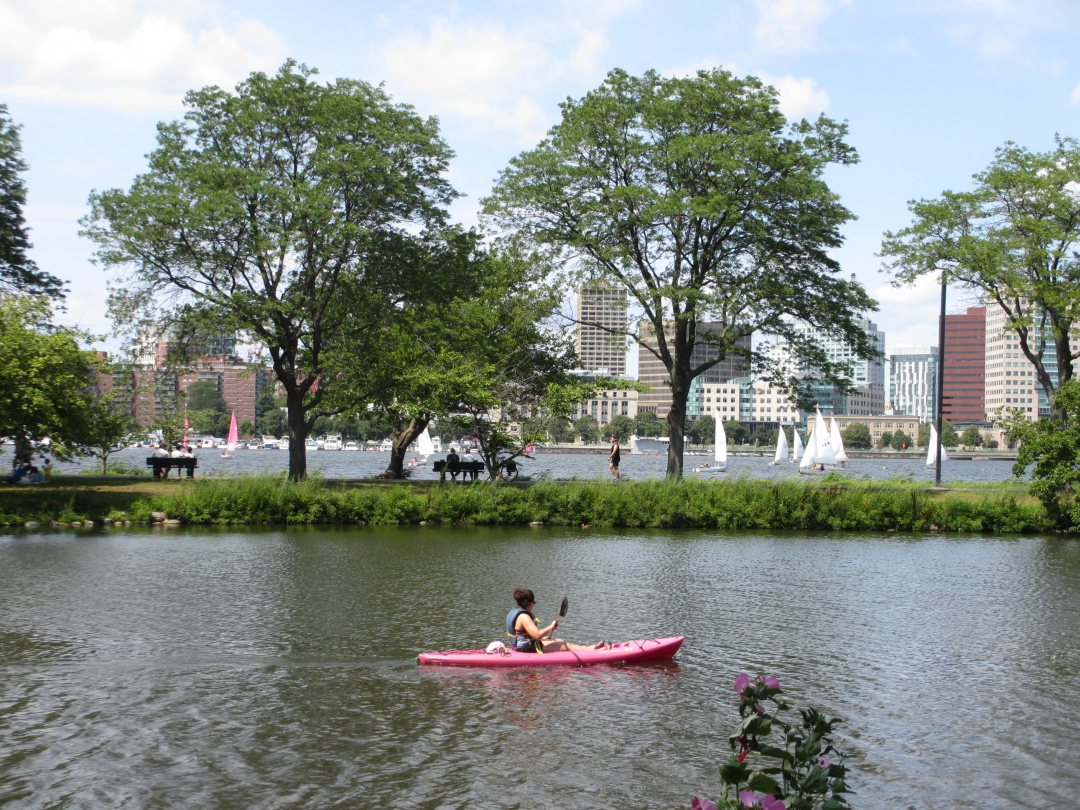
Where else can the flaws in the robust foundation be seen?
The biggest lesson from this crisis is just how important it is that not only should the most vulnerable people in our society be well protected, but they should be resilient as well. Just as in the case of floods, it is the elderly and the people who need help that are the weakest link and the worst hit. We are also learning how vital, but also how vulnerable, the people in the essential services are. It’s not only our nurses, police officers, rubbish collectors and water purifiers – who are now applauded – but the shelf fillers and cashiers who we undervalued until recently. And while they are highly needed, they run more risk of infection, largely because they cannot work from home and often travel to work on public transport.
The crisis is also showing the fragility of the supply chain in industry. We work with last minute delivery and minimal stocks as keeping stocks costs money. And we do not manufacture many products and parts in-country anymore, and we allow migrant workers to live and work in dubious conditions. Just look at the meat processing industry. Efficiency is no longer a guiding principle and we need to decide what it is worth to us to do things differently.”
Is the art then to find the balance between robustness and adaptivity?
“That’s it exactly. You can compensate the flaws in robustness with adaptivity and vice versa. To take one example from the corona crisis, don’t install IC beds everywhere but think of a system that allows you to rotate faster and share capacity. And to take an example of adaptivity from the world of water, floods in Bangladesh still claim the lives of too many people. But thanks to smart and effective systems that issue warnings faster, these are just a fraction of the huge toll in human lives in the recent past. And this drop is happening in a scenario where the sea level is rising and the implementation of the Bangladesh Delta Plan 2100 still has a long way to go.”
What lessons can you draw from this?
“That perfect solutions are often not feasible for many reasons. This is hard for the Dutch to accept. After all, there is a reason that the saying abroad is ‘God created the earth but the Dutch created the Netherlands’. We believe in the producible society and we have a strong system to protect ourselves from water while we benefit from it at the same time through our impressive infrastructure and governance.
But once we cross the border, we find ourselves in situations where things work differently. And then our plans do not get off the ground as we would like. Take The Great Garuda in the bay of Jakarta for example. An iconic, brilliant and technically very defensible plan for urban resilience. But it goes too far for politics, financially and socially so it will not happen. Similarly, an impressive delta plan could be designed for New York that would be just as defensible, but local political interests make it just as unfeasible so nothing will come of it. You’re better off just assuming that things sometimes simply won’t work. Other countries have a different political landscape, different logic and a different reality. The Dutch solution for governance, with water authorities that levy taxes, is sometimes hard to ‘sell’ abroad. We need to delve into local situations much more and see what is realistically feasible. Maybe the bar needs to be lower than it is here.”
What role can the Dutch water sector play in urban resilience?
“It is exactly this uncertain future that offers opportunities. Urban resilience is not only about hard infrastructure, but is mostly about the people and jointly building interconnected vital systems. These systems must work all the time if cities are to be liveable for people. Resilience and sustainability should constantly move closer to each other. Beer brewers that reduce their water consumption, and thus their water footprint, are more resilient because they are less vulnerable to fluctuations in water supply. The same goes for using sustainable energy for pumps. It’s good for the environment while at the same time it makes the pumps more resilient. Even if the power supply shuts down, the pumps still work and keep the polders dry. The Netherlands and its international partners are working hard on this and it fits seamlessly into the sustainable, inclusive and integrated approach that the country is known for. Robust and adaptive: this Dutch signature approach is what will consolidate the future. If we keep distinguishing ourselves with this approach and can link it to smart business cases, we can offer much more to the world in terms of urban resilience.”
How are you doing this, now and in the future?
“While the Dutch approach to water is acclaimed, we know that it cannot be taken for granted. The traditional export, as I mentioned, doesn’t always go smoothly. To bring our ideas and solutions across, we need water and resilience ambassadors who can share our ideas. I think it would be good if we could get other countries to learn even more about our approach. You see this in academic alumni. People who were trained in the Netherlands, mostly at the universities of Delft and Wageningen, work all over the world and they are of tremendous value for the Dutch water sector.
The water world is changing faster and faster so you need to constantly take small, smart steps. Smart adaptability is not only about adapting to water, but also about drawing smart lessons from developments such as artificial intelligence and big data. We need to bring more of that knowledge to the Netherlands and, as an example, link it to relevant bodies such as start-ups connected to the universities of Delft and Wageningen. I also see the potential of a connection with the Global Center of Adaptation through which the Netherlands is making progress.
Finally, I see opportunity in the connection between water and architecture. This is also an area in which we are renowned. But all these different worlds are not yet interconnected enough.”
These #WaterTalks are a source of inspiration on water relevant topics such as Urban Resilience, supported by the Partners for Water programme. They are the views of the interviewee and do not necessarily reflect those of the Dutch Water Sector as a whole.
If you are interested in discussing Resilience and the Dutch Water Sector, please contact the Netherlands Water Partnership: Janett Tapia, project manager Urban Resilience, j.tapia@nwp.nl.




